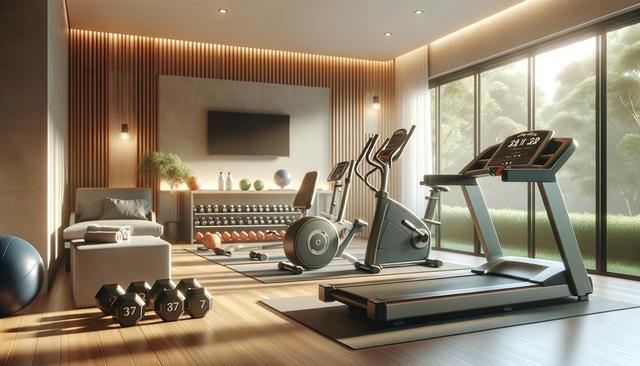How to Build Your Home Gym with Affordable Options
Creating a home gym like your local fitness center can be affordable. With the right equipment, you can focus on strength, cardio, and flexibility all in one place. Whether you need resistance bands, dumbbells, kettlebells, or smart fitness machines, these training tools are essential for a well-rounded workout. Plus, there are often deals and discounts available to help make these items more affordable. Don’t let high prices stop you from getting fit at home—here’s how to find great training tools at competitive prices!

Understanding Your Fitness Needs
Before diving into purchasing equipment, it’s important to assess your fitness goals and needs. Are you looking to build muscle, improve cardiovascular health, or increase flexibility? Each goal requires different types of equipment. For strength training, consider incorporating dumbbells and kettlebells into your routine. These tools are versatile and can be used for a variety of exercises targeting different muscle groups. For cardio, investing in a jump rope or a compact treadmill can be beneficial. If flexibility is your focus, yoga mats and resistance bands are essential. Understanding your specific needs will guide your purchases and ensure that your home gym is tailored to your personal fitness journey.
Finding Affordable Equipment
Building a cost-effective home gym is possible with a little research and savvy shopping. Start by exploring secondhand options. Websites and local marketplaces often have gently used gym equipment at reduced prices. Additionally, consider looking for sales or clearance events at sporting goods stores. Many retailers offer discounts during holiday seasons, allowing you to purchase high-quality gear without breaking the bank. Online platforms also provide a wealth of deals, especially for items like resistance bands and dumbbells. Check out customer reviews to ensure the equipment is reliable and durable before making a purchase.
Maximizing Small Spaces
Not everyone has a dedicated room for their home gym, but that doesn’t mean you can’t create an efficient workout space. Compact equipment like resistance bands, foldable yoga mats, and adjustable dumbbells are perfect for small areas. Consider multifunctional furniture that can double as storage for your gym gear. Wall-mounted racks can hold your weights, while hooks can keep resistance bands organized. By creatively utilizing your space, you can design a functional home gym that doesn’t compromise on quality or effectiveness.
Creating a Balanced Workout Routine
Once your home gym is set up, it’s crucial to establish a balanced workout routine. Aim to incorporate a mix of strength, cardio, and flexibility exercises. For strength, focus on compound movements like squats and lunges using dumbbells or kettlebells. Cardiovascular exercises can include jumping rope or using a stationary bike. Don’t forget to integrate flexibility and recovery practices such as yoga or stretching sessions. Creating a weekly schedule that includes all these elements will help you achieve comprehensive fitness results and keep your workouts engaging.
Staying Motivated and Consistent
One of the challenges of working out at home is maintaining motivation. Set realistic goals and track your progress to stay committed. Consider finding a workout buddy or joining online fitness communities for support and accountability. This can make your fitness journey more enjoyable and less isolating. Additionally, regularly updating your workout routine with new exercises or equipment can keep things fresh and exciting. Remember, consistency is key to seeing results, so find what motivates you and stick with it.
Conclusion
Building a home gym can be a rewarding and cost-effective way to maintain your fitness routine. By understanding your needs, shopping smartly, and utilizing your space wisely, you can create a workout environment that suits your lifestyle and goals. Incorporating a balanced routine ensures that you address all aspects of fitness, keeping you motivated and consistent. Embrace the convenience of working out from home and enjoy the journey towards a healthier you.